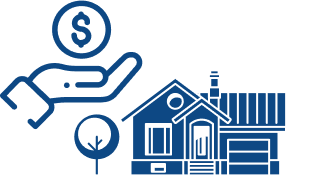What is a Planned Unit Development and How Does It Work?
October 5th, 2023 / Author: Zachariah PetersonEvery day a wide range of housing complexes are being constructed around the nation. A planned unit development (PUD) is one of these kinds of construction. In short, PUD projects are housing developments that collaborate with the local government to create standards that will establish common areas, private areas, and building rules - rather than being subject to the usual zoning regulations.
These communities can have single-family homes, condos, or townhomes and each homeowner is a member of a homeowners association (HOA).
What is a Planned Unit Development (PUD)?
A simple definition of planned unit development will be to say it’s a cohesive community of people who have similar or the same living requirements. Mostly single-family homes (sometimes condos or townhomes) packed in a calm environment offer a range of homeownership options at various price ranges, as well as quick access to offices, supermarkets, restaurants, schools, and entertainment.
Keep in mind that when you purchase a home in a PUD you will be the owner of the land and the property, but you will be obliged to follow certain rules that apply in that area.
Planned Unit Developments and Homeowners Associations (HOA)
Before you decide to buy a PUD property you should be aware that it always comes with various obligations towards a homeowners association (HOA).
HOA is a self-governing group in "common-interest" communities like PUD where residents contribute to the upkeep of their neighborhood or individual apartments. HOAs are primarily managed by local residents who serve as unpaid volunteers on a board of directors that governs the HOA.
There are a lot of things an HOA is taking care of in a PUD and some of the most common are:
- Community park
- Swimming pool
- Courts for various sports
- Clubhouse
- Playgrounds
- Neighborhood security
- Landscaping services
- General maintenance of the area
With these neighborhood perks, HOAs are trying to create close-knit communities where everyone will feel like they belong.
Remember, every PUD has different amenities to offer, so don’t forget to check them out when looking to buy a property and find ones that suit your needs.
Financing for a PUD
Since PUDs offer so many advantages for their homeowners, you should be aware that they come at a cost. Things like security, landscaping, mutual recreational facilities, etc. are paid by everyone in a PUD on a monthly or a yearly basis.
This payment comes on top of your mortgage so make sure that you are able to afford it before you commit.
When looking to get a mortgage for a home in PUD you will only have a couple of additional formalities when compared to buying any other property.
The main thing is that HOA in a particular PUD you are looking at is solid. This means:
- They don’t have a lot or any homeowners that are late with payments
- They have money reserves for unforeseen circumstances
- They don’t have any lawsuits filed against them
- They have reliable insurance policies for common amenities
The mortgage lender will also be interested in the functioning of the PUD you’re willing to join so they will look at all this information as well. Don’t forget that if you can’t make your mortgage payments, the lender becomes the owner of the property so it’s only natural that they inquire about purchasing details too.
You can have trouble getting a loan for the whole amount if your lender finds any problems with the PUD, their HOA, or their finances. Financial problems within the PUD may be a sign that local property prices may decline over time, increasing the risk to your lender and to you if you wish to sell your property in the future.
You might even need the help of real estate agents when it comes to gathering all background information about an HOA and forwarding it to your lender. Legal language around financial statements, conditions, and restrictions can be tricky for someone who isn’t dealing with these things on a daily basis, so better to be safe than sorry.
The easiest way to recognize a planned unit development while looking at real estate listings is if you see single-family homes and townhomes listed as condos or if there are fees connected with a homeowners association (HOA).
Now, this isn’t 100% proof that you are looking at a PUD, but oftentimes they are good indicators. You can always contact the person selling the property to check or ask your real estate agent to do the check for you.
Pros And Cons of living in a PUD
As you probably suspect there are numerous pros and cons of living in a planned unit development. Let’s analyze them:
Pros
Comfort
Living in a PUD has several benefits, one of which is comfort. These settlements are intended to resemble self-sufficient little villages. The goal of PUD residential complexes is to provide residents with as many conveniences as possible, from access to recreational amenities like swimming pools, tennis courts, or gyms to handy stores like pharmacies or grocery stores.
These can be used by tenants of the PUD and their visitors also.
Land ownership
Instead of the homeowners association, you are the owner of a building and land in a PUD. PUDs provide users additional leeway within predetermined bounds.
Regular Maintenance
PUDs often handle the upkeep in communal spaces, ensuring that the neighborhood remains tidy and friendly. Some PUDs could even maintain the yards of individual unit owners.
These can include but not be limited to lawn mowing, hedge maintenance, and snow removal.
Inexpensive amenities
In comparison to facilities you would find in other communities, PUDs could offer amenities at a reduced cost. Less money may be spent by residents on upkeep, utilities, and street reconstruction.
Sense of community
PUD amenities give you a real opportunity to interact with your neighbors. They have the potential to create a warm and welcoming neighborhood, which may be ideal for young families or seniors who are looking to retire.
Cons
HOA fees
Joining the HOA and paying its fees is mandatory and there is no way around it. A PUD home's numerous advantages come at a price.
Even though a PUD frequently provides a range of housing options at various price points to meet your budget, the majority still asks owners to pay monthly HOA dues on top of the cost of their homes in order to maintain the common facilities and outdoor areas.
Rules
There is a chance that you won’t be bothered with any of the rules in a PUD, but since they are regulating some aspects of everyday life, a number of people might find it hard to abide by them.
For instance, some PUDs limit the number of pets you can have and even the type of pet. Others can administer where you can park, how the outside of your house may be decorated, and even if and how many plants you can have in your front yard.
Spacing
Although you will have your own home, the houses are leaning on one another and you will share one or more walls with your neighbors. People who prefer more freedom and privacy would probably look to avoid this.
Summing up
In the end, a planned unit development can be a great place for living. Even though it has some rules and restrictions, they are there with the purpose of keeping the community satisfied and comfortable for everyone. And don’t forget – they apply to everybody.
Now all that is left is for you to do the math, weigh the pros and cons, and decide if PUD is the right choice for you and your family!
Selling a PUD property is easy with SleeveUp Homes. We buy houses in various conditions and locations, and we do it for top dollar. Just request an offer and see it for yourself! Plus, we save you cash by sparing you the trouble of repairs, fresh paint jobs, and other selling preparations.
SELL
YOUR HOUSE
If you want to sell fast and are worried about how long the traditional process takes, and the commission and fees involved, consider working with SleeveUp Homes.





 view all blogs by this author
view all blogs by this author Cesar Gomez (85 blogs)
Cesar Gomez (85 blogs)